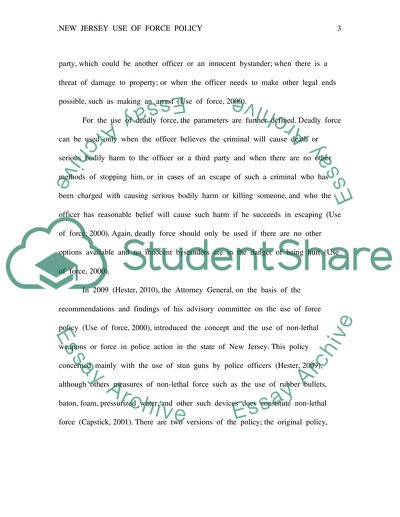Cite this document
(“Use of Force Policy in New Jersey Essay Example | Topics and Well Written Essays - 1000 words”, n.d.)
Use of Force Policy in New Jersey Essay Example | Topics and Well Written Essays - 1000 words. Retrieved from https://studentshare.org/law/1440766-policy-critique-new-jersey-use-of-force-policy
Use of Force Policy in New Jersey Essay Example | Topics and Well Written Essays - 1000 words. Retrieved from https://studentshare.org/law/1440766-policy-critique-new-jersey-use-of-force-policy
(Use of Force Policy in New Jersey Essay Example | Topics and Well Written Essays - 1000 Words)
Use of Force Policy in New Jersey Essay Example | Topics and Well Written Essays - 1000 Words. https://studentshare.org/law/1440766-policy-critique-new-jersey-use-of-force-policy.
Use of Force Policy in New Jersey Essay Example | Topics and Well Written Essays - 1000 Words. https://studentshare.org/law/1440766-policy-critique-new-jersey-use-of-force-policy.
“Use of Force Policy in New Jersey Essay Example | Topics and Well Written Essays - 1000 Words”, n.d. https://studentshare.org/law/1440766-policy-critique-new-jersey-use-of-force-policy.


